First photographic evidence of oceanic manta rays (Mobula birostris) at two locations in the Fiji islands
September 2022
Luke Gordon & Tom Vierus
Keywords: Ecology • Citizen Science • Mobulidae • Fiji islands • Manta ray • Elasmobranch
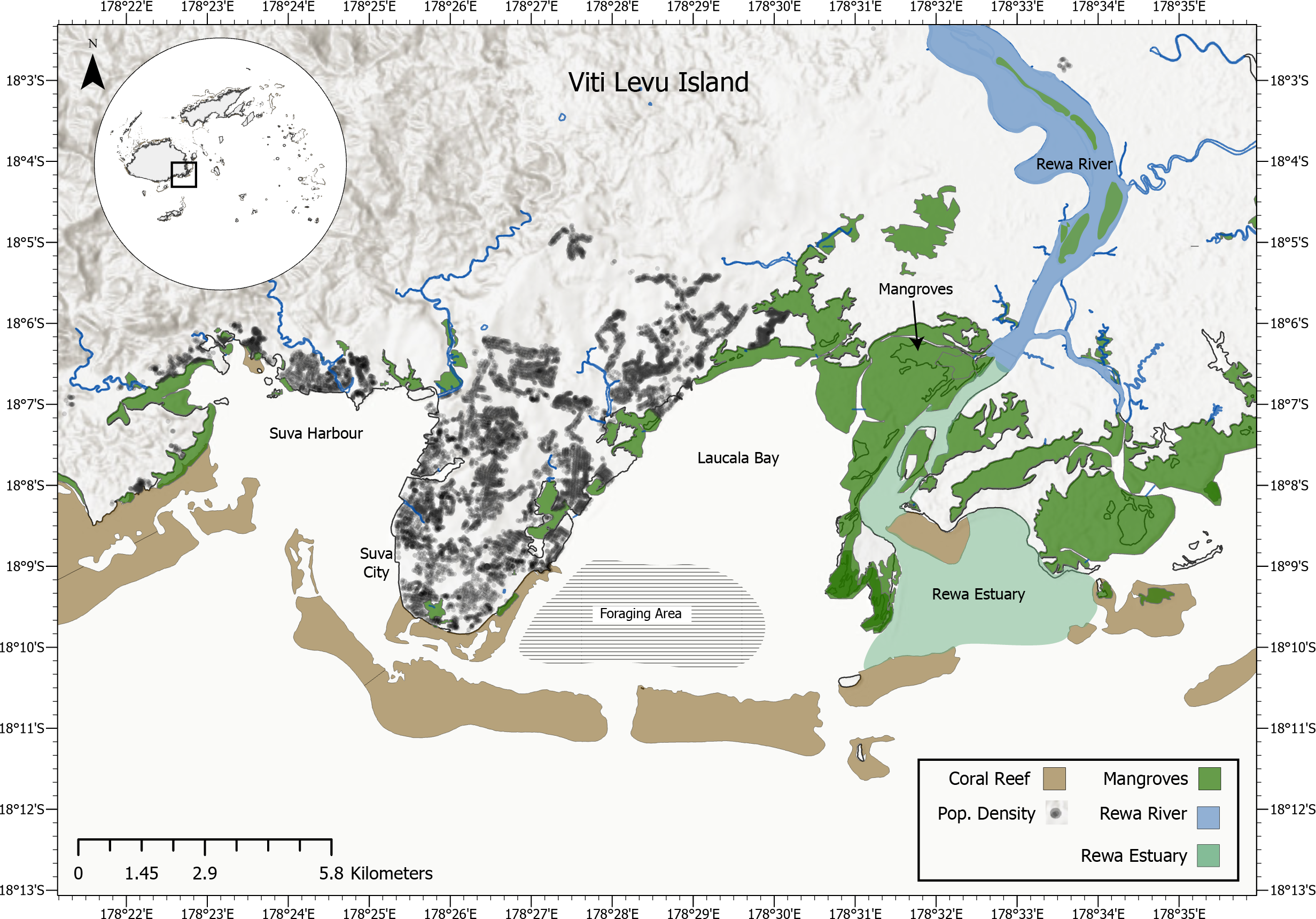

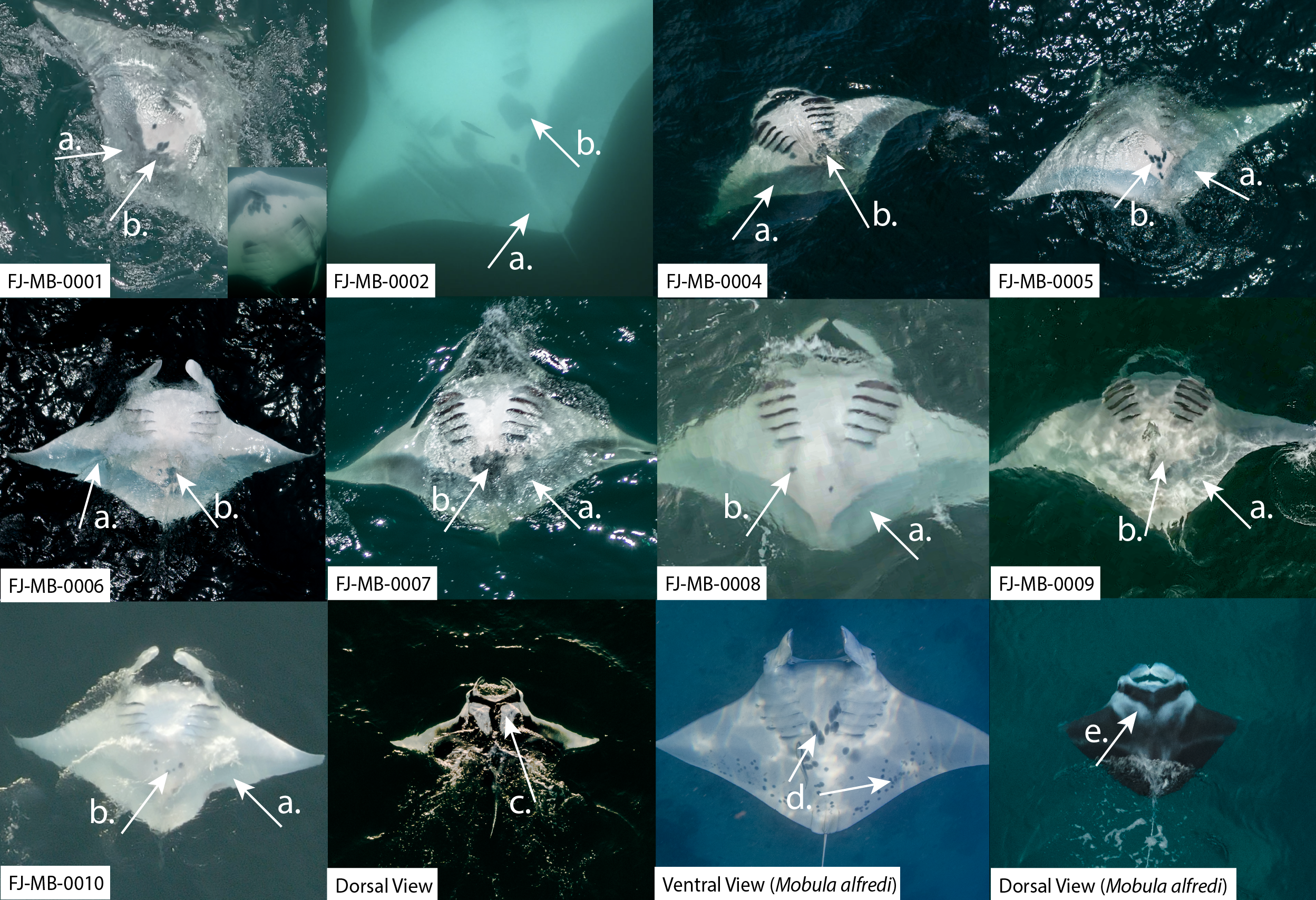
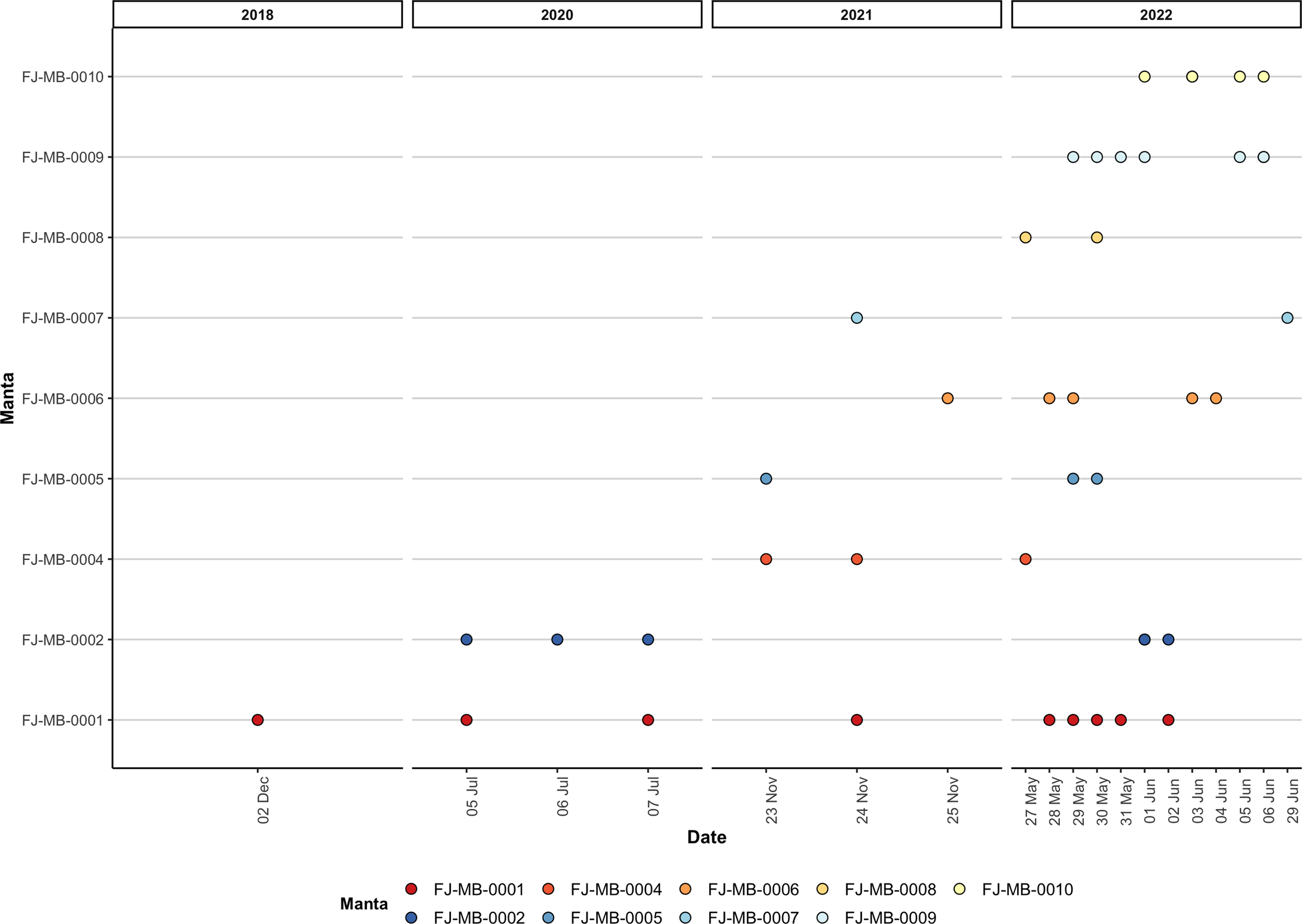

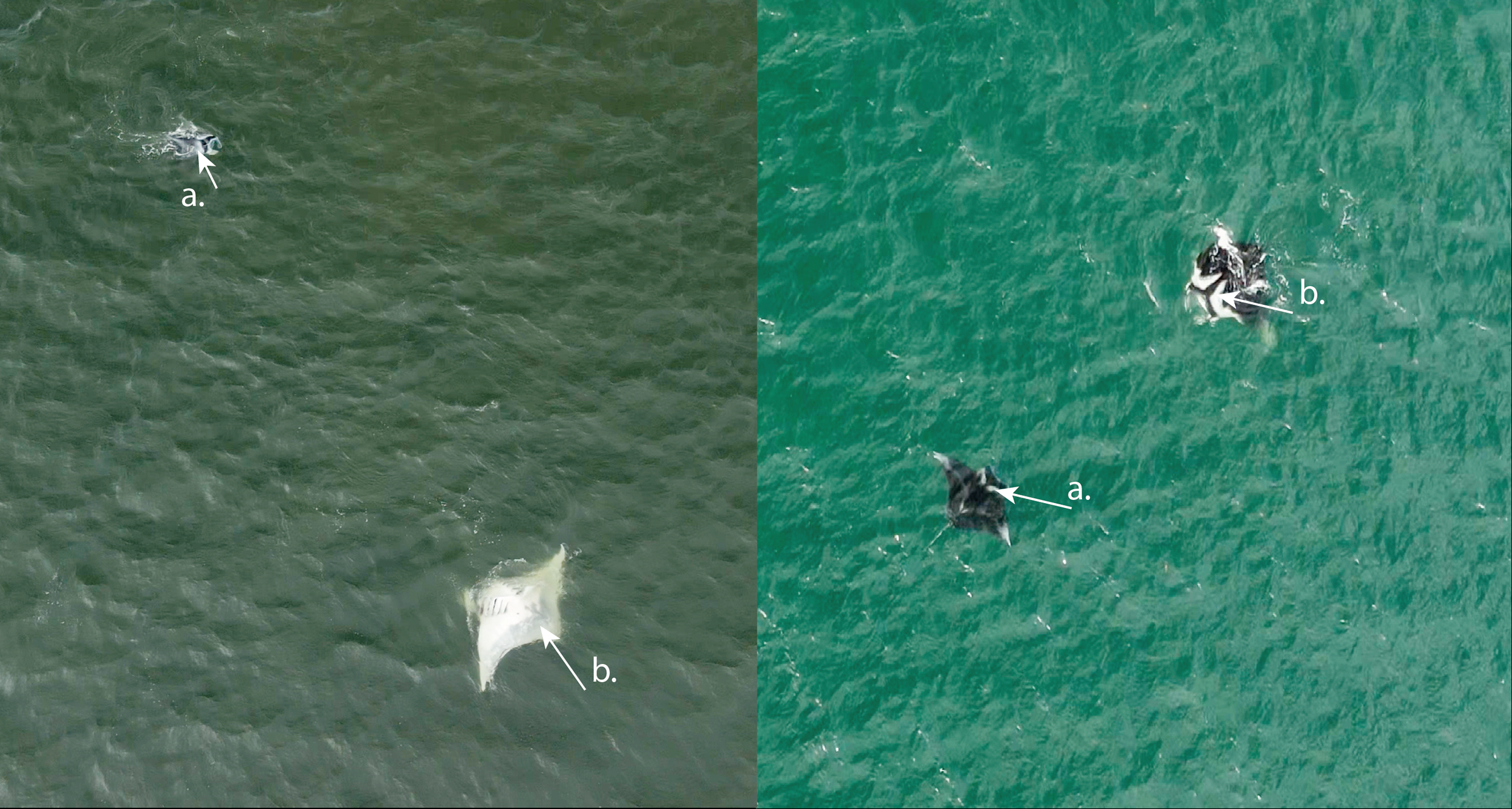
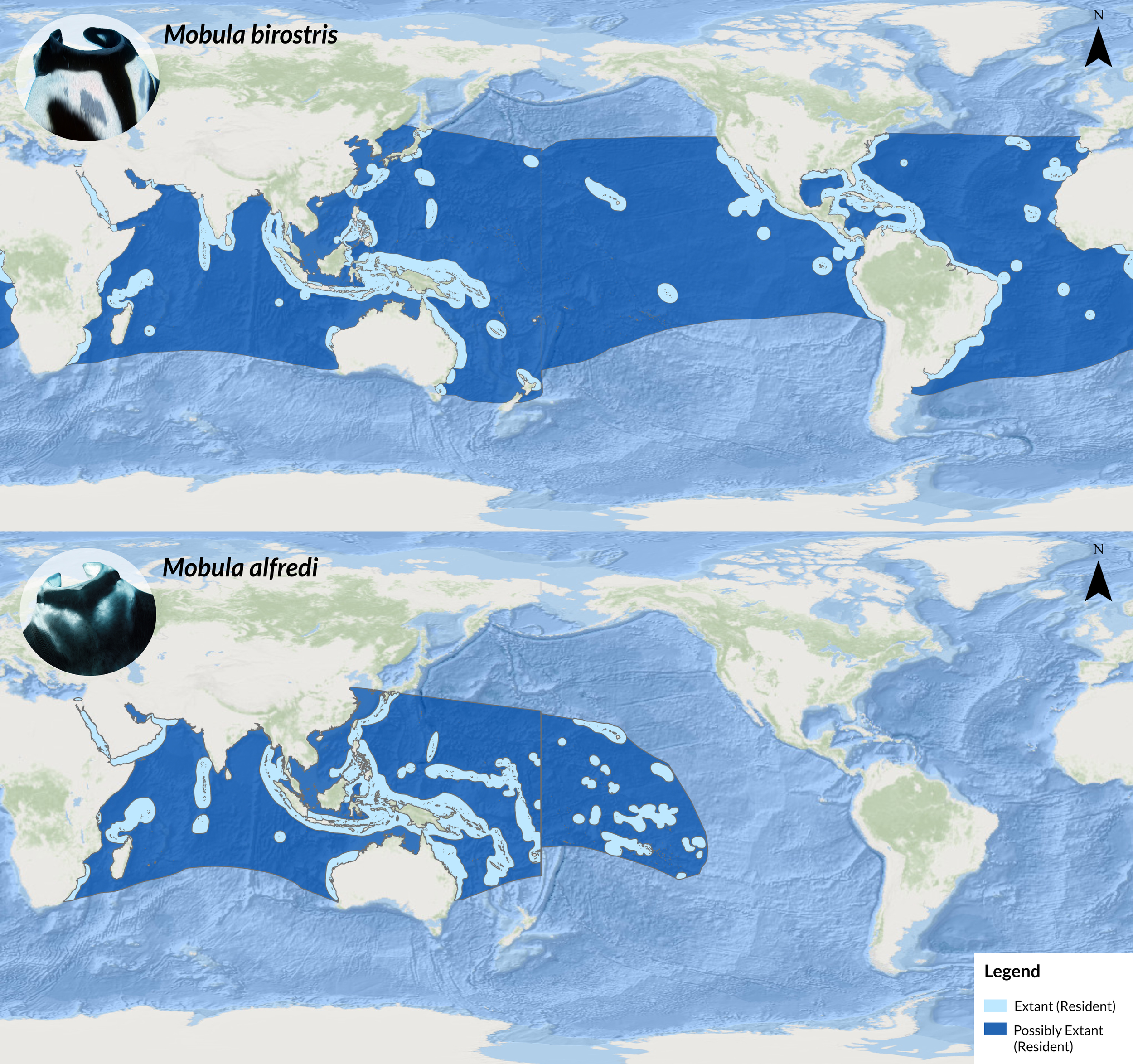
Summary: Prior to 2009, all recorded sightings of mantas in Fijian literature were classified as oceanic manta rays (Manta birostris). However, in 2009, a second manta species, the reef manta ray (Manta alfredi), was resurrected based on morphological and meristic data, leading to subsequent sightings being recorded as M. alfredi. In 2018, both manta species were moved to Mobula based on phylogenetic analysis. This article provides evidence of M. birostris occurrences in Fijian waters for the first time. Several individuals have been sighted in Laucala Bay over consecutive years, and additional sightings have been recorded in the Yasawa Island Group. This adds valuable information for the development of effective and data-driven conservation strategies, given the global extinction risk of M. birostris and its recent classification as Endangered on the Red List of Threatened Species.
Abstract
“Until the revision of the genus Manta in 2009, when a second manta species (Manta alfredi) was resurrected based on morphological and meristic data, all available records in Fijian literature were recorded as Manta birostris. Subsequently, documented sightings were recorded as M. alfredi. Another reclassification of the genus Manta was undertaken in 2018 when both manta ray species (Manta alfredi, Manta birostris) were moved to Mobula based on phylogenetic analysis. Here, we present the first unequivocal evidence of oceanic manta ray (Mobula birostris) occurrence in Fijian waters. In November 2018, two individuals were sighted foraging in Laucala Bay, a large lagoon adjacent to Suva, the capital city of Fiji. Subsequently, three more individuals were sighted in December 2018, two individuals in July 2020, at least six individuals were observed in November 2021, and eight individuals in May/June 2022, all foraging in the same geographical area. Unique ventral identification patterns could be obtained for nine individuals, and all nine individuals have been re-sighted since first identification, with one individual being documented in 2018, 2020, 2021 and 2022. Two additional individuals were recorded in the Yasawa Island Group in the west of Fiji while passing through and foraging in a channel between Drawaqa and Naviti Island in April and September 2020. We provide photographic identification of ten M. birostris individuals from two sites and discuss our findings in the context of local environmental parameters and other recorded sightings in the South Pacific region. In light of the global extinction risk of M. birostris and the recent reclassification from Vulnerable to Endangered on the Red List of Threatened Species, the expansion of their known distribution range to Fijian waters and the recurrence of individuals over consecutive years in the same location adds valuable information for the development of effective and data-driven conservation strategies.”
Author Affiliations
Manta Trust
Suva, Fiji Islands

